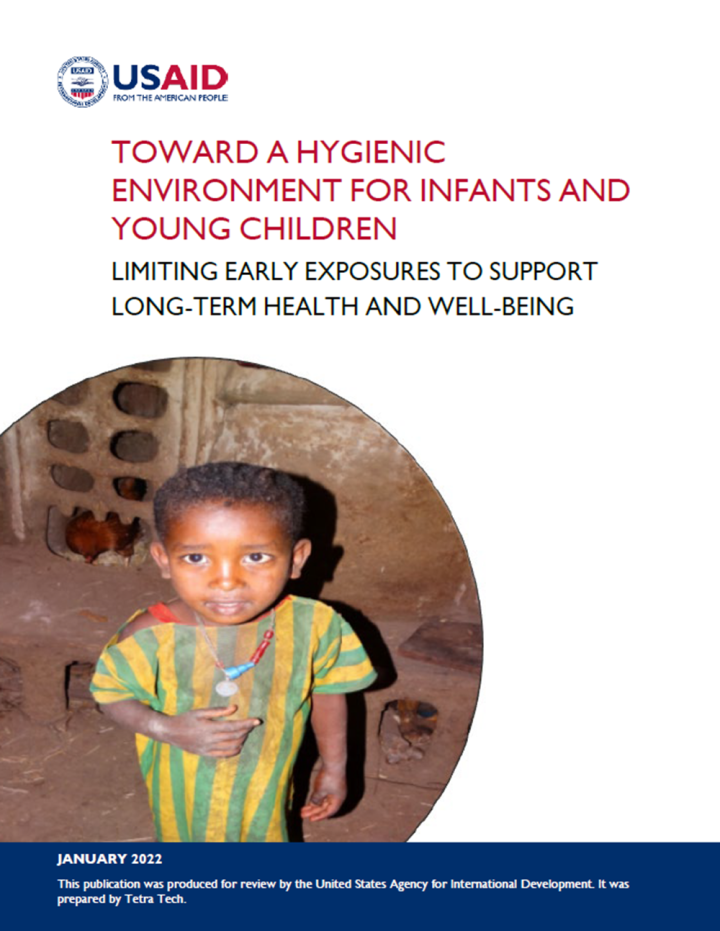Toward a hygienic environment for infants and young children - Limiting early exposures to support long-term health and well-being
USAID (2022)

Published in: 2022
Pages: 51
Publisher:
USAID
Author:
USAID
Uploaded by:
SuSanA Admin
109 Views
0 Downloads
Direct ingestion of animal and human feces in soil as well as exploratory mouthing by infants and young children remain underemphasized pathways of fecal pathogen exposure impacting child health and growth, as highlighted in the 2018 Water, Sanitation, and Hygiene Partnerships and Learning for Sustainability Program (WASHPaLS) desk review, “Toward a Hygienic Environment for Infants and Young Children.”
For decades the seminal “F-diagram” has been used to depict routes of pathogen transmission from human feces to a new host via fluids, fields (floors, earth, dirt), flies, fingers, fomites (surfaces), and food. The classical F-diagram focuses exclusively on human excreta, tracing transmission of pathogens through different exposure routes; culminating in diarrheal morbidity and mortality. Traditional water, sanitation, and hygiene (WASH) interventions to disrupt transmission via these pathways have conventionally focused on increasing access to improved water, hand hygiene and sanitation measures. When focusing specifically on infants and young children (IYC), it is increasingly clear this framework inadequately presents the comprehensive set of causal pathways and interventions to disrupt them. This may partially explain why achieving widespread reductions in childhood infections remains elusive, despite decades of nutrition and WASH interventions.
This review updates the 2018 desk review cited above, focusing on recent peer-reviewed and gray literature on behavior change innovations that address domestic animal excreta in home environments (infant playpens, poultry cooping and feces management), safe disposal of infant feces, food hygiene, and improved flooring—all behavior-product combinations with the potential to protect IYC. The evidence does not yet point clearly to best practice, but implications for implementation programming are discussed, including alignment with USAID WASH and development technical briefs on Social and Behavior Change for WASH and WASH and its Links to Nutrition.
Bibliographic information
USAID (2022). Toward a hygienic environment for infants and young children - Limiting early exposures to support long-term health and well-being. USAID
Filter tags
English















